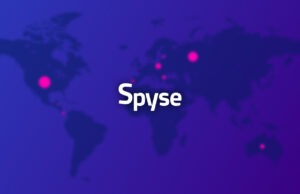Reverse Proxy Vs. Forward Proxy

Proxy is a term that denotes that a person is acting on behalf of another person.
In the computer context, one server acts on behalf of another server. The proxy server of a computer acts as an intermediary between the computer and another server. The proxy server has become a necessity, as the client computer IP address can be hidden from prying people, for security reasons. It also prevents unwanted access to the user’s computer and the internet usage, by being a mediator. While navigating through the Internet, the proxy servers help to facilitate access on the Web.
The proxy is usually found on the local computer or as an in-between, between the local computer and another server on the Internet, through two types of proxies, which are forward proxy and reverse proxy. The forward proxy serves as a gateway or a tunnel. The reverse proxy helps to protect server access for purposes of caching, decryption, authentication and load-balancing. Proxies can be implemented through Web proxy servers or Socks proxy or Transparent proxy.
A forward proxy stands between the client and other servers. It is used to reduce outward traffic by using cache data. It can restrict users from having access to unwanted sites. Outgoing request from corporate employees is an example of forward proxy. In this, Intranet users can connect to the internet. Though they are not suitable for Application Delivery, they can filter client connections for compliance reporting and to prevent them from visiting harmful websites. Here is website which mainly taking about the How the forward proxy server works.
The reverse proxy is the opposite of the forward proxy. It stands between a server and many clients such as Incoming requests for a Corporate Website. By this the internet users can connect to private networks. The user can connect with the original server and forward the original request. A user connection request can be received. It can perform TCP Multiplexing by which incoming connections get terminated, pooled to establish new connections. Cloudflare is one of great website which offer the Reverse Proxy to you use, Learn more How the Reverse Proxy works on Cloudflare.
Differences Between Forward Proxy And The Reverse Proxy
Forward proxy is usually used by large organizations such as large enterprises and universities. Using this, the employee activities online can be monitored, and employees can be blocked from viewing certain websites. Malicious traffic can also be avoided. Under the control of a local administrator, the requests for clients to an unknown resource outside the control can be handled. The web proxy appliance handles web traffic from the client machines and proxy them to the internet servers, by which the client system traffic is managed. Forward proxy is made use of, to prevent employees from visiting websites such as Facebook during office hours.
The reverse proxy lives within the network and directs the traffic and serves the content to the websites behind it. Reverse proxy handles requests from a remote group and proxies it to known resources under a local Administrator, by which the service system is managed.
Forward Proxy is used for NAT’ing, Compliance Reporting, email Security and Content Filtering, while Reverse Proxy is used for Caching, Content Switching, and Compression, Application Delivery such as Load Balancing / TCP Multiplexing, Application Firewall and Authentication.
Through Forward Policy, the Internet is accessed by the server and only the server has direct exposure to the Internet by which others cannot get direct access to the Internet. During school hours, the students are prevented from allowing internet access, to playing games on websites which prevents them from studying and disrupts their study time. It can do other activities such as content checking and cache downloads to improve the accessibility to the Internet. The server needs a public IP address for its services.
Through Reverse proxy, the server is the proxy to the device connected to. Through this there is security benefit, as the users are directed to the proxy server, whenever they require access to the web. One SSL certificate is sufficient for this and one public IP address is sufficient. When there are many visitors to a website, a single server will not be able to handle the traffic. In such situations, the website can put the reverse proxy on the internet to send users to the servers that are closer to them, when they visit the website.
The forward proxy acts on behalf of the client, while the reverse proxy acts on behalf of the server. The forward proxy helps to enforce security policies as all responses and requests can be monitored and their source and destination can be identified. Requests can be allowed or denied, as it is a single point of control and access. The reverse proxy acts on behalf of servers and accepts requests from the external clients on behalf of all the servers behind it by providing services such as file transfer. The Load balancers are most crucial to provide network services especially large request volumes. The reverse proxy distributes the incoming requests to several servers through load balancing.
Forward Proxies are used in filtering connections from harmful websites visited and for compliance reporting. The Reverse Proxies are used to perform TCP Multiplexing by which incoming connections are severed and pooled. New connections are then established using back-end server connections of a lesser number. Ten incoming connections can be connected to one back-end connection.
Both Forward Proxy and Reverse Proxy servers relay the response and the request between the sources and the destination machines. For protecting the clients, the forward proxy can be used while the reverse proxy can be used to protect the servers. Forward Proxies help users to hide their IP address when they browse through the internet or for other such services from the internet.
The reverse proxy server is used as compression compress to optimize the content and to speed up the loading time. Forward Proxy servers act as intermediary from clients to seek help from other servers such as a connection, file, web page or other resources. They are mostly used for IP address blocking and to provide anonymity. The forward proxy manages client traffic while reverse proxy manages the server systems.













 © 2024
© 2024
0 comments